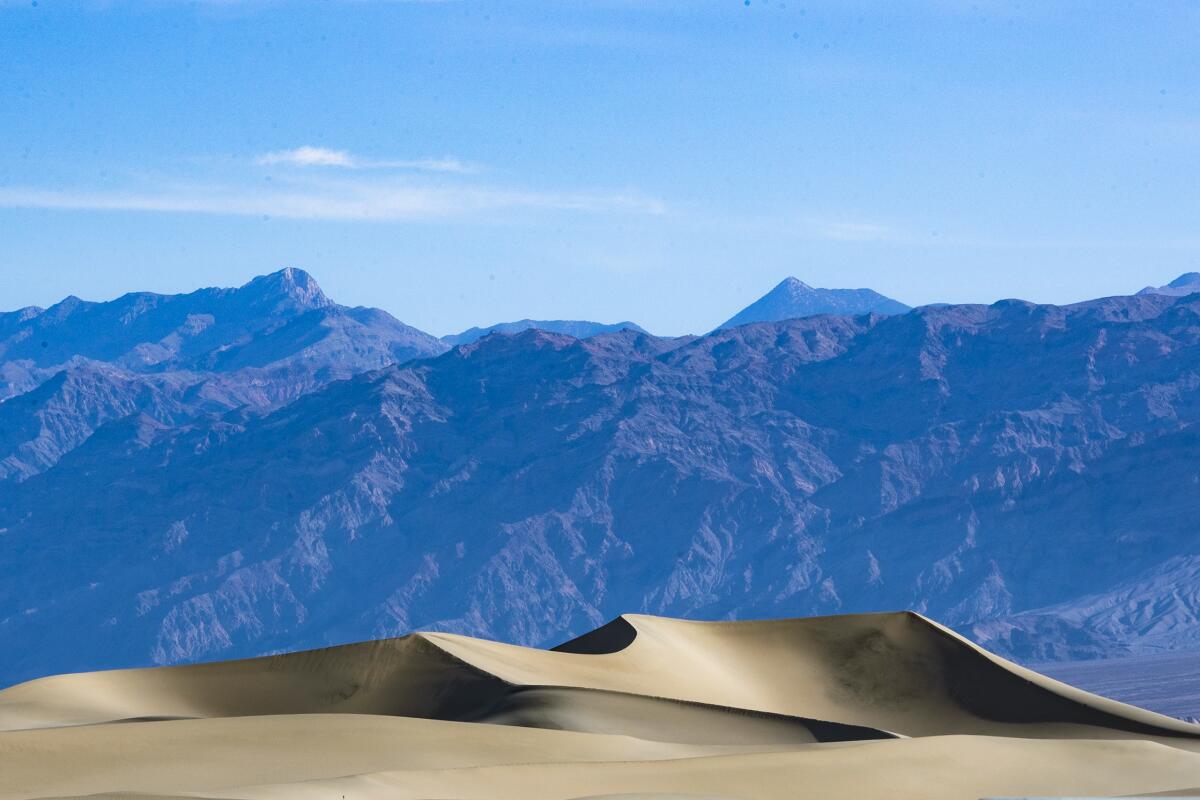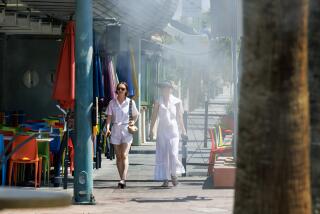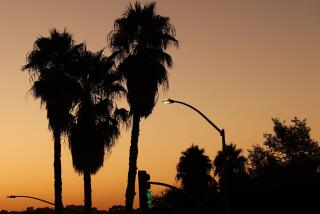Death Valley keeps breaking records, but is it really the hottest place on Earth?

- Share via
California’s Death Valley is one of the hottest places on Earth.
But was it in fact the hottest place on the planet Thursday when the giant thermometer at Furnace Creek in Death Valley National Park hit an eye-popping 127 degrees?
Officials caution that this is not an entirely accurate reading.
“The thermometer reading is taken literally from that site. It’s on the back of the digital display and it’s not even sheltered properly,” said Daniel Berc, a meteorologist with the National Weather Service in Las Vegas. “It’s more of a ‘Boy, wow! Look at this number.’ It’s not exactly what happened here.”
Although the park boasts striking salt flats and impressive dunes, many visitors come to see the thermometer and snap a selfie, Park Ranger Matthew Lamar said.
“The thermometer doesn’t meet the standards set by the National Weather Service and tends to read 2 to 3 degrees higher than the actual temperature,” Lamar said.
It’s a bit of an exaggeration when news stories point to the digital thermometer and claim Death Valley is the hottest place on Earth, Berc said. Meteorologists are usually not comfortable claiming one place is the hottest on the planet because that involves lots of data and research to confirm.
“But this is a hot one, I’ll give you that,” Berc admitted.
The official reading Thursday for Death Valley was 124, beating the record for Sept. 1 set in 1996 by 1 degree. Forecasts show that Friday and Saturday could also break records set in the last 20 years by 1 degree. The Sept. 2 record was set at 122 in 2017, and the Sept. 3 record was set at 121 in 2007, according to the National Weather Service.
But there’s always the possibility that the temperatures could fall just above or below whatever record was set that day, Berc said.
This heat wave is a late one, landing at the tail end of the monsoon season. Last month, Death Valley and the surrounding Mojave landscape were submerged in water as record rainfall gave way to flash floods. Flash floods hit the Las Vegas Strip at the end of July and returned in early August.
Most roads washed out during the floods in Death Valley National Park, and officials don’t expect to start construction during the heat wave. Lamar cautioned park visitors to bring plenty of water and other supplies if they plan to visit during this heat wave. GPS directions also might be unreliable due to the road damage and could lead some visitors to back roads.
“It could be an exciting time to visit Death Valley, but guests need to be prepared,” Lamar said. “Be prepared, do your research and don’t be afraid to reach out to the park with your questions.”
A second flash flood within two weeks inundates Las Vegas, making 2022 the city’s wettest monsoon season in a decade.
A heat wave butting in during the monsoon season is not unheard of, according to meteorologists. But a late heat wave is notable, with record temperatures reaching 8 to 10 degrees above normal, Berc said.
“People in Las Vegas don’t bat an eye at 100 degrees. But they take notice at 110 after Labor Day,” Berc said. “This one is a longer-lasting heat wave, which brings accumulative effects of not cooling down at night and particularly harming the homeless population.”
With less time to cool down, people don’t have the luxury of recuperating at night and might not notice they’re being negatively affected by the hotter weather.
This can be dangerous, even life-threatening.
“Heat is the No. 1 weather killer,” Berc said, “because people know not to go outside and stand in front of a tornado. Sometimes they don’t know better with the heat.”
More to Read
Sign up for Essential California
The most important California stories and recommendations in your inbox every morning.
You may occasionally receive promotional content from the Los Angeles Times.











